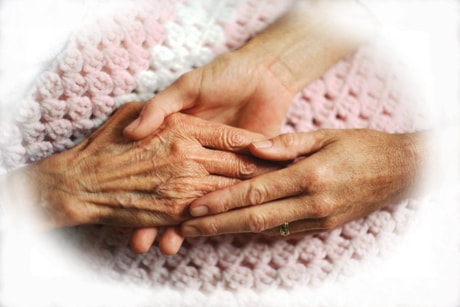By Anne-Marie Tobin
One in six people who take care of the everyday needs of ailing seniors at home is in a state of distress, says a study of more than 130,000 people age 65 and over who receive publicly funded long-term home care in Canada.
These informal caregivers are flagged as being in distress when they’re unable to continue providing care, or they’re expressing feelings of distress, anger or depression.
The report released last week by the Canadian Institute for Health Information shows that those caring for seniors with moderate to severe cognitive impairment — such as Alzheimer’s or dementia — are most at risk.
The definition of informal caregiver in the study doesn’t include professional home-care workers, but rather the spouses, adult children, friends or neighbours of seniors who assist with activities of daily life.
About 55 per cent of seniors in the data from 2007-08 received informal care from a spouse, while almost 75 per cent of those who weren’t married had assistance from an adult child.
The good news is that five out of six caregivers are coping well, said Nancy White, manager of home and continuing care development at CIHI.
But it can be challenging to care for a loved one at home, and it’s important to identify caregivers at risk of burnout.
“What happens if a caregiver begins to feel stress and perhaps that they’re unable to continue in their role, then it creates a crisis in the family where a decision may have to be made to send the senior to a long-term care facility or nursing home or other residential care facility,” she said.
“And in fact the caregiver themselves may end up in hospital or needing treatment because of the stress that they’ve been through.”
The report shows rates of distress are higher among those providing more than 21 hours a week of care, those caring for seniors with depression and cognition problems, and those displaying aggressive behaviours.
Elaine Villeneuve, 66, was recently awarded a certificate for her dedication to the task of caregiving — but says it’s tough at times looking after her husband, former member of Parliament Noble Villeneuve, 72, who had a stroke about nine years ago.
“He spent four months in the hospital doing rehab, and since then he’s been home and I’ve been looking after him,” Elaine Villeneuve said from their home in Maxville, Ont.
Villeneuve said a home-care worker comes in every morning for about an hour to help get her husband up and showered, and someone also comes in for a five-hour block of time on Tuesdays and Thursdays.
Those five-hour reprieves mean a lot to her, and give her a chance to do banking, go to doctor’s appointments, go out for lunch and meet with friends.
“You have to get away. You can’t be here all the time. It’s hard on the nerves, and it takes a lot of patience and you need a break. I look forward to them.”
Her husband’s mind is still sharp, and they play cribbage almost every day and go out for rides, still able to manage the transfer from his wheelchair to the car.
She confessed that before the stroke, she often heard people talk about stress and didn’t know what they were talking about.
“But I found out.”
As government grapples with issues surrounding how to keep ailing and disabled seniors at home rather than in long-term care facilities, it should “be ready to look after us in financial ways,” Villeneuve said.
“We’re sort of saving them money by keeping them at home here, and that’s what they want. They keep pushing that, you know.”
Sue Pearl-Agar, vice-president of ParaMed Home Health Care, says the company’s staff tries to promote that caregivers are not failures if they accept help.
“Most of the times they’re in it for the long run and the long haul, so they need to sustain themselves,” she said. “So trying to be a hero and trying to do it on their own — they’re not alone, they should not think that they’re alone, and they should access help.”
The company has between 4,000 and 5,000 employees in Ontario and Alberta.
Pearl-Agar said caregivers need to stay organized in their personal lives as much as they possibly can, and set schedules to allow a place for their own personal priorities and responsibilities.
“They have to look after their own health. They need to make sure that they are going to their own doctor, that they’re eating healthy, that as much as possible they’re getting enough sleep, enough regular exercise.”
A companion study on caring for seniors with dementia found that wandering was the main reason for these patients to be in a care facility rather than at home.
“A recent hospital admission, resisting care and physically abusive behaviour were also important factors,” said the report, Caring for Seniors With Alzheimer’s Disease and Other Forms of Dementia.
One in five seniors receiving publicly funded long-term home care had a diagnosis of dementia, while three in five in a residential care facility had the condition. The odds of being placed in a facility were nearly double for those who were not married compared to those who were married.
The prevalence of dementia is expected to rise to almost three per cent of the population, or nearly 1.1 million Canadians, by 2038, the report estimated. In 2008, almost half a million Canadians suffered from the condition — about 1.5 per cent of the population.
